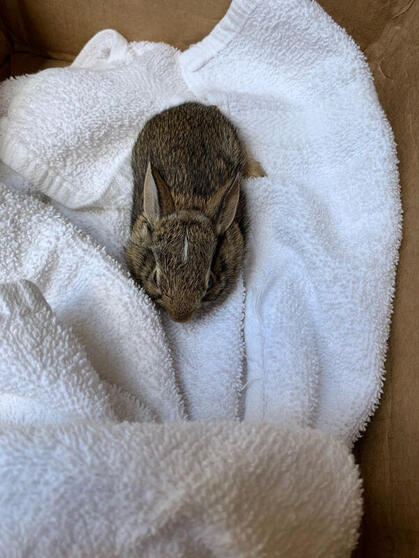
Injured Baby Bunny Care: A Comprehensive Guide
Baby bunnies, also known as kits, are vulnerable creatures that require specialized care if they are injured. Finding an injured baby bunny can be a distressing experience, but with the right knowledge and prompt action, you can significantly increase its chances of survival. This comprehensive guide will provide you with detailed instructions on how to care for an injured baby bunny, covering everything from initial assessment to rehabilitation and release.
Initial Assessment
Upon finding an injured baby bunny, it is crucial to assess its condition and determine the extent of its injuries.
- Check for obvious injuries: Look for any visible wounds, broken bones, or bleeding.
- Examine the bunny’s eyes: Check for any discharge, redness, or swelling.
- Inspect the bunny’s mouth: Open its mouth gently and look for any injuries or deformities.
- Feel the bunny’s body: Gently palpate its body to check for any lumps, bumps, or tenderness.
- Assess the bunny’s behavior: Observe its activity level, appetite, and response to stimuli.
First Aid
Once you have assessed the bunny’s condition, provide immediate first aid to stabilize its injuries.
- Stop bleeding: If the bunny is bleeding, apply direct pressure to the wound using a clean cloth or gauze.
- Immobilize broken bones: If you suspect a broken bone, gently immobilize the affected area using a splint or bandage.
- Clean wounds: Gently clean any wounds with a sterile saline solution or warm water. Avoid using harsh chemicals or detergents.
- Keep the bunny warm: Baby bunnies are prone to hypothermia. Wrap the bunny in a warm towel or blanket and place it in a warm, draft-free environment.
Feeding and Hydration
Injured baby bunnies require frequent feeding and hydration to maintain their energy levels and promote healing.
- Feeding: Feed the bunny every 2-3 hours using a syringe or dropper. Use a specialized formula designed for baby rabbits or kitten milk replacer.
- Hydration: Offer the bunny water or electrolyte solution regularly. You can use a syringe or dropper to administer fluids.
Housing
Provide the injured bunny with a safe and comfortable housing environment.
- Enclosure: Use a small box or cage lined with soft bedding, such as towels or fleece.
- Temperature: Keep the enclosure at a temperature between 85-95°F (29-35°C).
- Lighting: Provide a dim light source to simulate natural daylight.
- Cleanliness: Keep the enclosure clean by removing soiled bedding and replacing it regularly.
Rehabilitation
Once the bunny’s injuries have stabilized, you can begin rehabilitation to help it regain its strength and mobility.
- Physical therapy: Gently massage the bunny’s muscles and joints to promote circulation and prevent stiffness.
- Exercise: Encourage the bunny to move around its enclosure by providing toys or obstacles.
- Socialization: If possible, introduce the bunny to other rabbits to promote socialization and reduce stress.
Release
When the bunny has fully recovered from its injuries and is strong enough to survive on its own, it is time to release it back into the wild.
- Gradual release: Start by releasing the bunny into a secure outdoor enclosure for a few hours each day.
- Monitor the bunny: Observe the bunny’s behavior and ensure it is able to find food and shelter.
- Full release: Once the bunny is comfortable in the outdoor enclosure, you can release it into a suitable habitat.
Special Considerations
- Orphaned bunnies: If you find an orphaned baby bunny, it is crucial to seek professional help from a wildlife rehabilitator or veterinarian.
- Wild bunnies: Wild bunnies should not be kept as pets. They require specialized care and can carry diseases that are harmful to humans.
- Legal considerations: In some areas, it is illegal to keep or release wild animals without a permit. Check with your local wildlife authorities for regulations.
Conclusion
Caring for an injured baby bunny is a challenging but rewarding experience. By following the steps outlined in this guide, you can provide the bunny with the best possible chance of recovery and release. Remember to prioritize the bunny’s well-being, seek professional help when necessary, and respect the laws and regulations governing wildlife care. With patience, dedication, and a compassionate heart, you can make a significant difference in the life of a vulnerable baby bunny.
